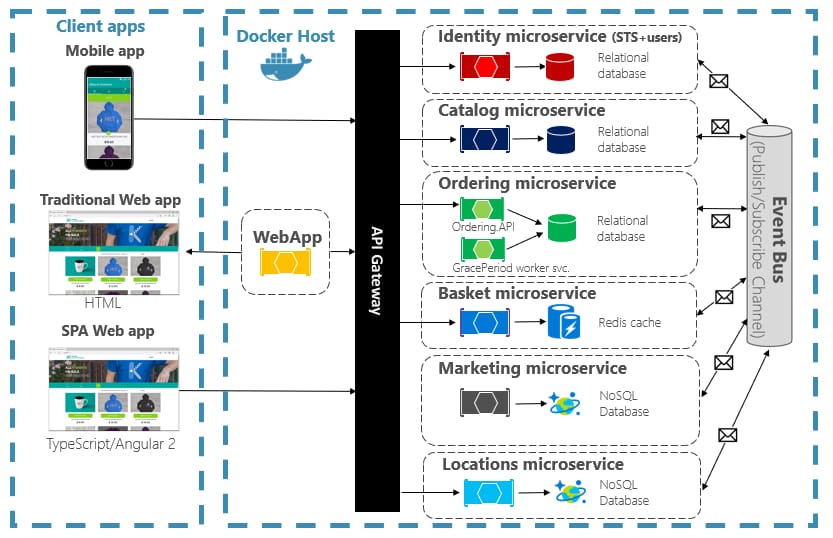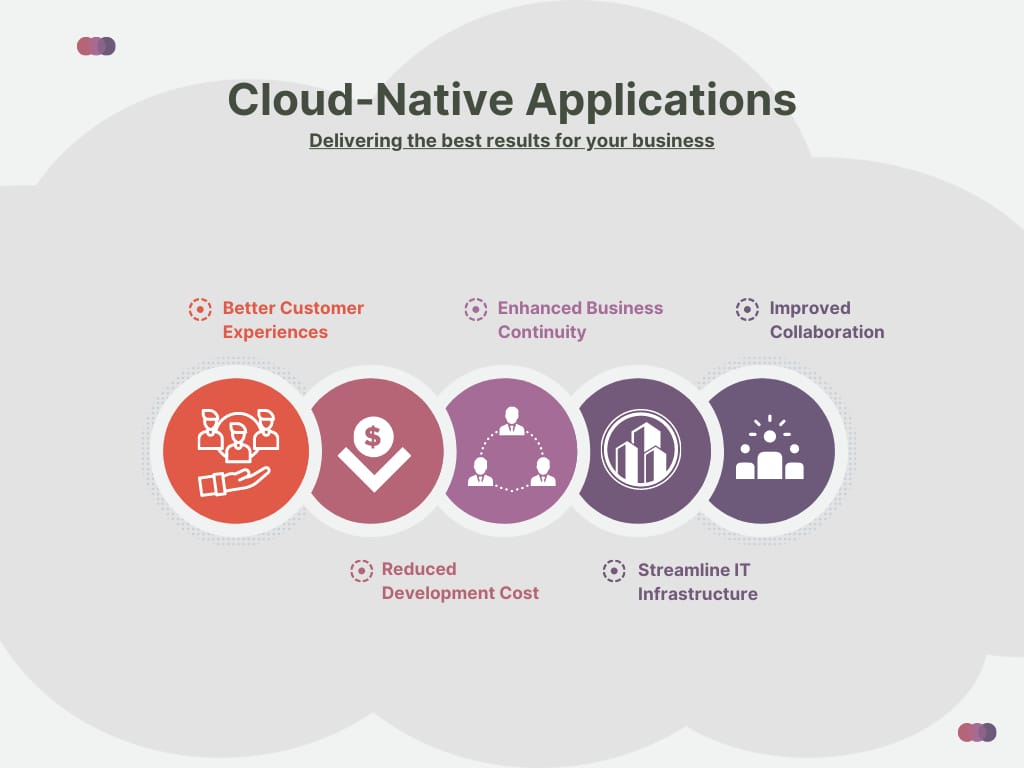This is a guest article by Madhu Kesavan from W2S Solutions
Shifting organization operations to the digital realm is no longer an option. Enterprises are embracing cloud-native applications to attain the speed, size, and flexibility necessary to operate in fast-paced and dynamic markets. Cloud-native applications allow you to immediately incorporate user feedback for ongoing improvement, which aids in delivering business value. Sounds interesting, right? Keep reading!
The most recent wave of digital disruption has been the creation of cloud-native applications. Since markets have grown so dynamic and customers so demanding, cloud-native technology enables businesses to bring concepts to life quickly. According to a study, the market for cloud applications was worth $133.6 billion worldwide in 2021; by 2025, it is anticipated to grow to $168.6 billion.
The application development and deployment process, particularly for software-as-a-service (SaaS) applications, has dramatically changed from on-premise software to cloud services. Using the cloud is not the end. Taking it to the next level with cloud-native applications will take advantage of enhanced agility, availability, scalability, and general performance.
Learn about cloud migration strategy in our dedicated article.
What is a Cloud-Native Application?
The cloud-native application is the concept of creating apps that take advantage of distributed computing to exploit the resiliency, scale, flexibility, and elasticity the cloud delivery models offer. These applications are run and hosted in the cloud. It benefits businesses with independent services, portable containers, and is packaged as self-contained. It is designed mainly for the cloud.

An illustration of cloud-native design Source: Microsoft
The dynamic cloud infrastructure empowers the cloud-based applications to take advantage of cloud characteristics. The cloud-native approach offers the best features, such as service meshes, immutable infrastructure, declarative APIs, microservices, and containers. It allows developers to address frequent changes with significantly less effort.
Key principles of cloud-native architecture
Have a look at some of the key principles of cloud-native architecture.
Microservices
Microservices are considered an architectural strategy capable of managing complex applications simply. They are highly capable of communicating with others which is possible with a language-agnostic API since it is an independent process. Each service is confined and focuses on completing the scheduled tasks on time.
Microservice architectures are well known for their modern application-building strategy that allows you to reuse and redesign specific areas based on your requirements. Enterprises can adopt microservices for easy deployment, scaling, and development and support technological diversity.
Containerization
Containers are now mainstream to developers and enterprises for building cloud-native applications. Linux namespaces are used to handle the space between network stacks, processes, and file systems. Containers are highly secured partitions that perform best by following the namespace method. Each container runs one or more multiple Linux processes and is supported by Linux Kernel on the host.
It works like virtual machines (VMs) do and is highly flexible for running operations smoothly. VMs are only installed with the help of a full operating system, whereas containers support apps using the packaging software. Developers and enterprises efficiently manage their applications with a packaging approach. Containers have less weight than VMs and require less maintenance and fewer resources to process the cloud-native apps.
Most enterprises prefer containers for faster accessibility, higher portability, and easy deployment.
CI/CD
Continuous integration (CI) assists in automating the integration of new code in a repository so that multiple contributors can have access to working on the same project simultaneously. CI tools are capable enough to run automated tests and verify that new bugs are not present in the code. It also prohibits overwriting other developers' work and automatically creates new builds once the verification process is completed.
In addition, it uses these methodologies in cloud-native software development. Cloud-native CI tools and processes allow a team's DevOps experts to work together on a similar codebase and update the software frequently without compromising the quality. Continuous delivery (CD) helps deploy new code builds for production and testing processes. Besides all that, the software release cycle is streamlined.
The CD methodology for cloud-native development benefits the cloud-based infrastructure by providing microservices. Multiple teams can work simultaneously on different modules since each microservice is developed, tested, and deployed independently. It has wide adoption with developers and enterprises for managing rapid and agile delivery of complex cloud-native apps.
DevOps
The cloud-native approach is DevOps' best practice to automate the process between operations and software development teams. It is bringing innovation to the global market at a rapid pace and helping enterprises to transform along with DevOps to align the processes and technologies for boosting business efficiency and productivity.
The collaboration of DevOps with the CI/CD paradigm has benefitted developers in iterating software to improve deployment time and reduce errors. From an enterprise perspective, a cloud-native approach with DevOps for software development helps maximize agility via continuous deployment and allows apps to scale up without needing further changes.
Benefits of adopting cloud-native applications
Here are a few best outcomes delivered to your business by cloud-native apps.

Benefits of cloud-native architecture
Better Customer Experience
In the current generation, traditional app features such as software updates for long periods, having dedicated teams for handling specific tasks, and so on are no longer required for better customer experiences in the modern world. Adopting cloud-native apps helps enterprises to use a mobile-first approach for application development, focus on feedback and deployment cycle, and prioritize the customer experience to offer better features.
Reduced Development Cost
Previously, enterprises with monolithic architecture earlier had fixed resources and cost way too much for maintenance and backup, even though they were not involved in the software development process. With cloud-native apps, enterprises can benefit from reduced maintenance, backup, use of resources and development costs. Open source systems and tools such as serverless systems have seen a drastic cost cut after adopting the pay-per-use model.
Enhanced Business Continuity
Many companies rely on cloud-native infrastructure today to gain enhanced business continuity by keeping apps, data, services, and transactions flowing. The shift from traditional infrastructure to cloud-native infrastructure is due to problems such as software crashes, system failure, and frequent errors. These threats are addressed with cloud-native solutions to keep your critical applications running with reduced risks.
Streamlined IT Infrastructure
Cloud-native applications have streamlined IT infrastructure by modernizing the app's build quality and deployment phase and easing the operations to offer better services for customers. This transition led the enterprises to improve their organizational structures, processes, and data flows. It paved the way for many enterprises to transform their business, compete aggressively with competitors, and build new products.
Improved Collaboration
Cloud-native success relies on improved collaboration between silos and improved cross-team work. Shifting to a DevOps methodology for the cloud-native architecture model benefits enterprises with adaptation, collaboration, containerization, and delivery. Cloud-native apps enable greater collaboration between developers and operations teams to eliminate misconceptions about project handling.
Best practices for developing cloud-native applications
Here are some of the best practices for developing cloud-native applications.
Leveraging appropriate languages and frameworks. Cloud-native applications are mainly built for a long life and running in the cloud. They take advantage of the cloud to reduce deployment risks and increase flexibility, quality, and speed. It uses various frameworks, languages, and runtimes to best suit the functionality.
Automation. Cloud-native apps are automated across popular cloud vendors, allowing you to track the code changes in the repository with the help of infrastructure-as-code (IaC). It is capable of managing complex applications.
Monitoring. The apps and the underlying architecture are easily monitored with the help of cloud-native development environments.
Documentation. The development teams can document the changes using cloud-native applications and see how each team has performed to address the errors in providing the best product and services.
A multifaceted approach to security. The dynamic nature of cloud-native apps is aligned with topnotch security and defense-in-depth strategy to automate and orchestrate unwanted threats.
Use cases of cloud-native applications
Cloud-native apps deliver the best opportunity for end-users to access faster, stay reliable and resilient, and get innovative ideas to the market sooner. Since the cloud became dominant in the tech-driven world, every organization's production process has increased. It has helped various developers' teams avoid distractions and improved the quality of their work.
Cloud-native applications have assisted enterprises in standardizing their efforts and made it easier to create better environments. DevOps teams can convert an innovative idea into functionality for an app by using the CI/CD approach. It provides an advantage to an enterprise to excel in the market and gain customer loyalty with this new functionality or feature.
Automation plays a huge role in the CI/CD pipeline from assembling and testing builds, compiling code, enhancing continuous delivery, and providing the best update for cloud-native apps. The use of cloud-native solutions with automation ensures the app is protected from various vulnerabilities.
Here are a few examples where organizations that have adopted cloud-native applications.
Capital One. Capital One is the nation's largest retail bank. It manages millions of transactions daily with the help of its cloud-native apps deployed on AWS. It has benefitted the organization with increased productivity, better decision-making, and costs are down.
Pinterest. Pinterest is a visual discovery engine for finding billions of ideas to “pin” across monthly online bulletin boards. By shifting to cloud-native apps, their organization simplified deployment and management of workloads and reduced build times to improve efficiency.
Huawei. Huawei, one of the largest telecommunication equipment manufacturers in the world, runs hundreds of apps using eight data centers. They moved from internal IT applications to cloud-native apps and benefitted from the efficiency of application delivery and global development cycles as operating expenses were reduced.
Final Thoughts
Cloud-native apps have become more popular among enterprises for collecting, retrieving, and storing data in a consumer-driven environment. It is the right tool for an organization to use to navigate the global competition to deliver, collaborate on, and increase work productivity. Cloud-native solutions have helped various enterprises make their business vision come true by overcoming the traditional model limits. So, by adopting the best cloud-native approach, enterprises can become more agile, scalable, and productive to be future-ready while meeting the needs of the present.
Madhu Kesavan, CEO & Founder of W2S Solutions, a well-established cloud computing company. He supports enterprises and governments on their journey to digital transformation. Over the course of his career in the IT industry, he uses technology to provide sustainable solutions. Connect Madhu on Linkedin.
Want to write an article for our blog? Read our requirements and guidelines to become a contributor.

